IMDb meta-data is 1 hour and 17 minutes of run time and rated 4.8 by 2400 cinemitizens.
It is a creature feature with some differences that surprised the fraternity brothers. See the list below.
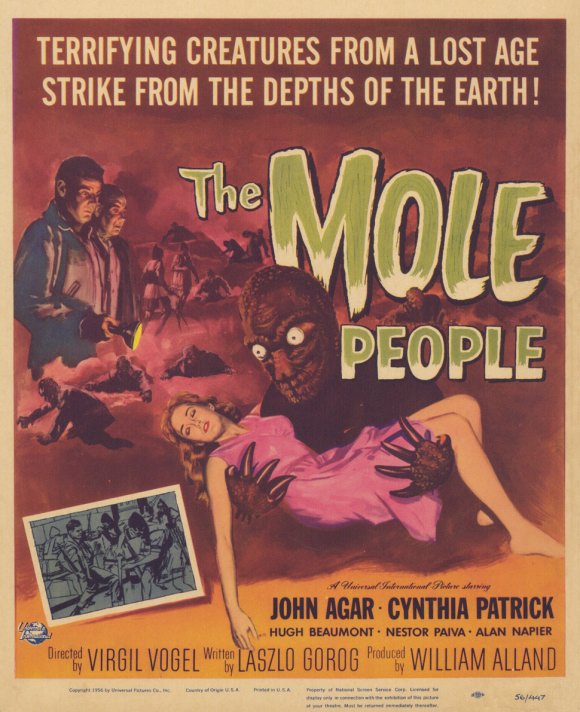 As misleading as lobby cards usually are. At no time does a Mole Person carry around the Marked Woman. Read on for explanations.
As misleading as lobby cards usually are. At no time does a Mole Person carry around the Marked Woman. Read on for explanations.
A party of archaeologists search for a temple of Ishtar in Sir Edmund Hillary’s stock footage of the Himalayas. The research grant that funded the trip did not include a GPS so they missed Babylon. Five in number they include the required local guide, the required Red Shirt, the required ethnic stereotype, the superfluous Beaver’s dad Ward, and a catatonic John Agar, doing what he does best, sleep walking to payday.
They come upon just such a temple as we saw in the Pergamon Museum in Berlin. Come to think of it, if in Berlin, why not in the Himalayas? During the ascent the local guide falls out of the picture and collects his check.
Next the Red Shirt carelessly falls through a crack in an earthquake. Agar, Ethnic Stereotype, and Ward descend to retrieve the Red Shirt’s Actors Equity card, and another quake seals them in. Doomed!
Mindful of his own career trajectory, Agar concludes that the only way to go it down. Down they go. Nestor Paiva is the ethnic in tow, a talented actor who is completely wasted in this role as the cowardly lion. We know he soon will join Guide and Red Shirt at the pay window.
They encounter stunt men in rubber suits — the Mole People (because Superman had copyrighted ‘Mole Men’ in 1951, this lot are ‘People.’) These encounters are very effective as the MPs rise up out of the sand piled on the sound studio floor. This was an inexpensive and effective method of staging.
They are rescued from the MPs by Babblers in funny hats from 3000 B.C. who have been living underground since then. Driven there by real estate prices up top. For these albinos theirs is the whole and only world. The scriptwriters betrays knowledge, often a firing offence in Hollywood, by having King Albino use sixty as a base number.
An effort is made to explain how they have survived. Mushrooms, which as any Hippie will say, have a lot to offer, goats, and fish. Minerals shine for light.
Behind King Albino is the High Priest who babbles a lot of nonsense that brought to mind sermons from the era, about how God loves only them, provides only for them, must be prayed to, and so on. Agar remains inert. He’s good at that.
The Babblers are suspicious of the surviving two, Agar and Ward. Nestor got Moled. But, well, maybe it is Ishtar’s will. Scripts work in mysterious ways.
Babblers live an orderly and clean life, but…. Yet, in short running time our heroes learn that the society exists on the slave labour of the black Mole People who are frequently beaten to death faire encourager les autres mining mushrooms. Moreover, the Babble-on population never exceeds 150. Never, because there are only so many mushrooms.
When there are more than 150, then the excess individuals are sacrificed to Ishatar.
Pause.
B movies were often accorded more latitude that A pictures, and that is apparent already in this one with its deprecation of religion, with the enslavement of blacks by the very white and cruel albinos.
We also get to see the sacrifice. Three young women calmly line up and pass through a door. Later guards remove three gruesomely charred corpses. It is the charred corpses that would never be seen in an A film. Young women dropping their robes as they serenely go to the oven, and that certainly got the attention of the fraternity brothers, is nothing new, but the crispy critters were. Is it another indictment of religious superstition?
These three had to go and they were chosen because they were marked! Yes they had some skin pigmentation. So those sacrificed were those of colour, Aryan though they seem, not so compared to the Babblers with their white pancake make-up.
By now Agar has his hand on a marked woman and she strokes his…ego.
Agar and Ward stop some cotton field overseers from beating three black Mole People to death, and free the beaten Moles. As the three freed MPs leave one returns and stares at Agar. This is communication of a sort.
Later when the Babblers decide there are not enough mushrooms for dinner they decide to toast Agar and Ward.
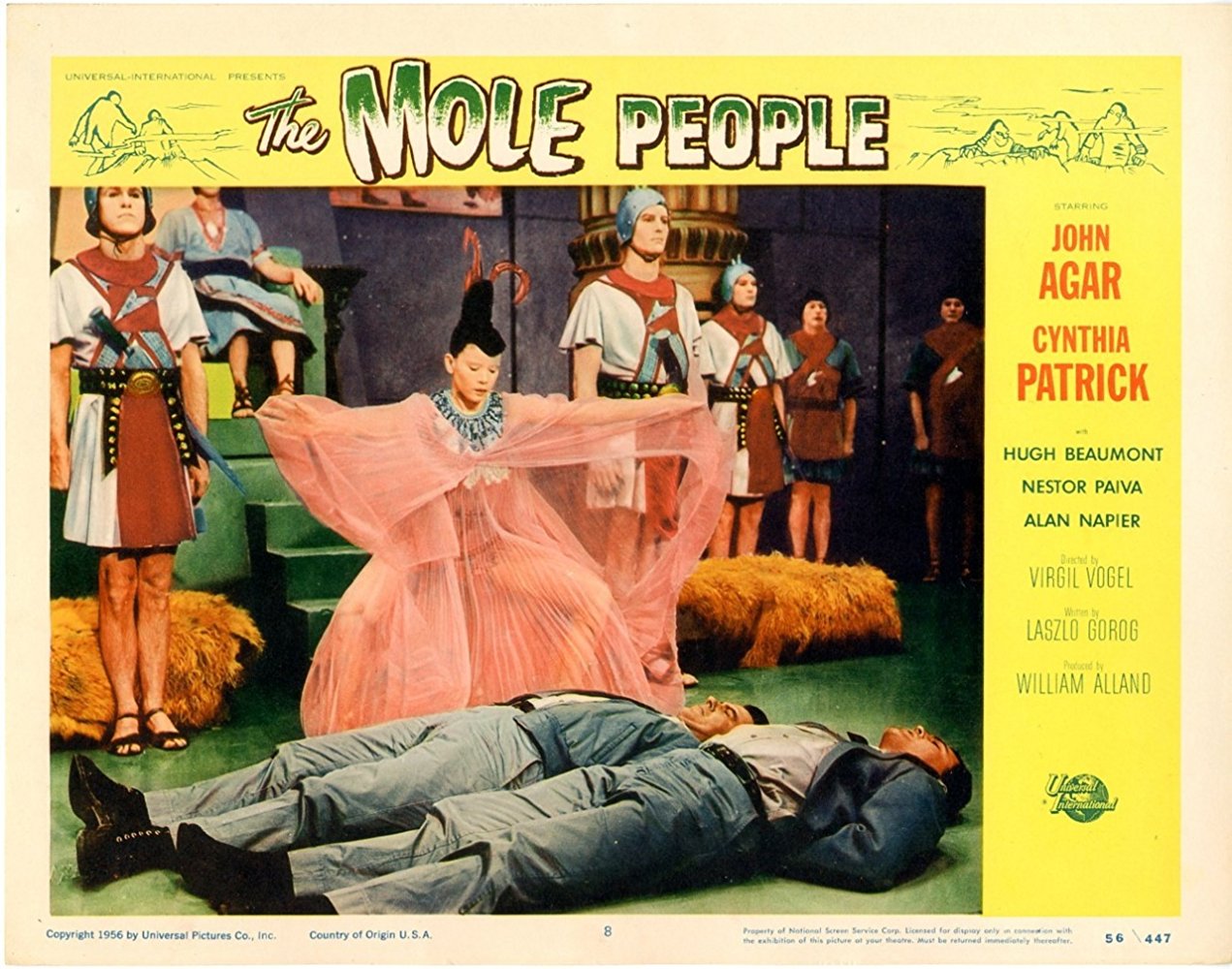 Agar at his best. Ward patiently waiting.
Agar at his best. Ward patiently waiting.
Then, thanks to the miracle of scriptwriting, the Mole People erupt out of the ground in revolt. Fisticuffs ensue. Marked Woman fails the test of opening the door by removing the bar, preferring to pound on it per the director’s instructions.
End of Babblers. The Mole People return to watching reruns of ‘Superman versus the Mole Men’ (1951), each time hoping it will turn out differently.
The oven behind the doors is sunlight through a fissure. This sunlight crisps albinos to a charred, barbecue black. Ward, Agar, and Marked Woman climb up the fissure to safety. But there is a surprise in the end, one that makes no sense. Spoiler! Another quake occurs and Marked Woman dies, leaving Agar without a date for his next binge.
The End.
Points of note include:
1.The scientists in Sy Fy are archeologists with neither magnets nor electricity
2. Established religion is superstition at best and deadly at worst.
3. Political power is short-sighted and self-serving.
4. A flashlight is essential to a spelunker and an exception to (1) above.
5. The whitest of whites are albinos and they enslave blacks.
6. They are also cruel to blacks.
7. They enjoy (5) and (6) above.
8. Mushrooms are best in beef stroganoff.
9. Human sacrifice requires disrobing to save on dry cleaning.
10. Sunlight without sufficient SPF produces crispy critters, turning albinos into black cinders.
11. Is it smart to sacrifice young women? The fraternity brothers cried, ‘No!’
12. This is not the only world.
13. The screen play by László Görög has some posers in it but the direction is petrified.
14. Despite the lobby card, the Mole People are the victims of the monstrous albinos.
These items help to overcome the nausea caused by the first five minutes in which Professor Frank C. Baxter (1896-1982), English, University of Southern California, lectures stunned viewers on speculations of underground worlds, without mentioning Pat Boone. Baxter was a television personality of the era meeting KPIs, Key Pontificating Irritants. He was public intellectual before that execrable concept was devised to licence ranters.
For the numerate, a few numbers from the fraternity brothers who were taking notes. There were 31 deaths (humans, Moles, and Babblers), while Prof Baxter made 38 hand gestures in five minutes. Of the 150 Babblers, twice sixty and a half, only 34 were seen at any one time. Only 18 Mole People were seen at once, and they bore 88 lashes.

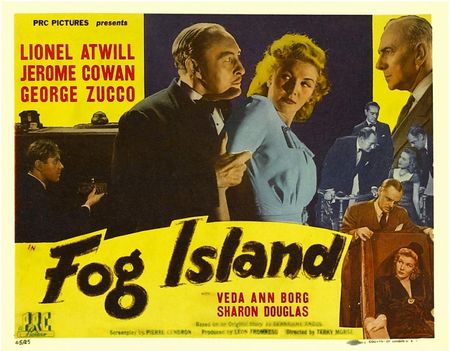
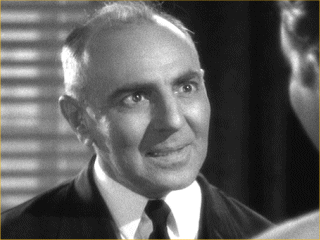 George Zucco
George Zucco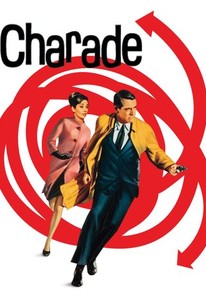
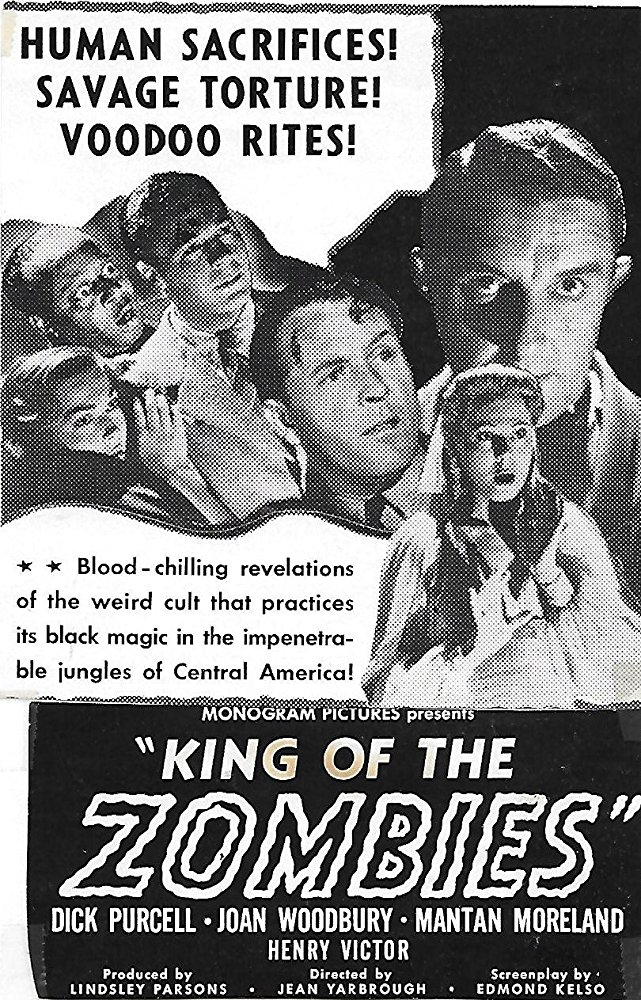 The lobby card is wrong on every count. The ritual is from a Masonic Lodge. There is no torture and no human sacrifice.
The lobby card is wrong on every count. The ritual is from a Masonic Lodge. There is no torture and no human sacrifice.
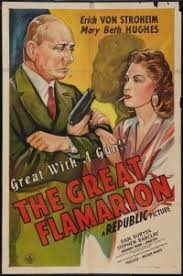
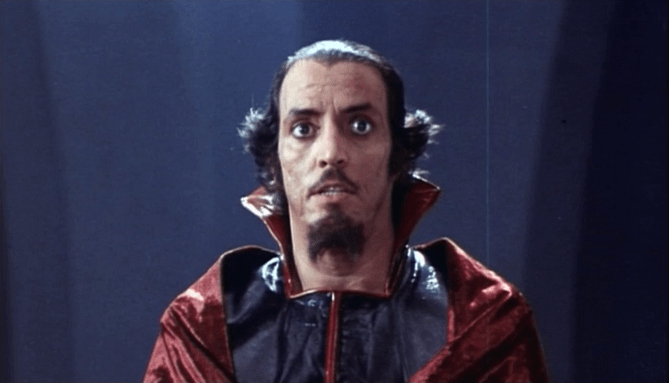 See.
See.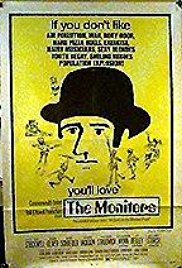
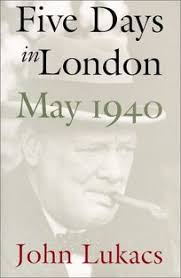
 John Lukacs has a long list of impressive publications.
John Lukacs has a long list of impressive publications.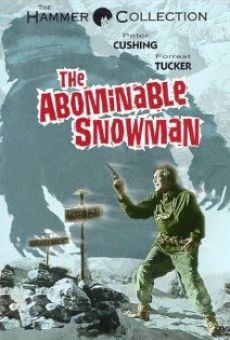
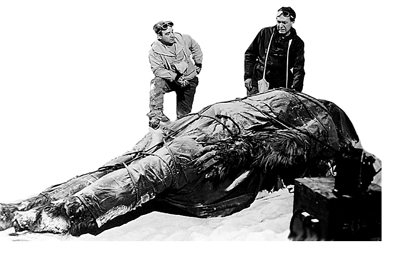 Big.
Big.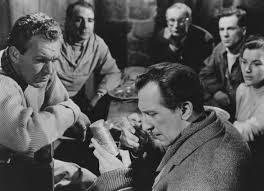 Before the body count starts.
Before the body count starts.